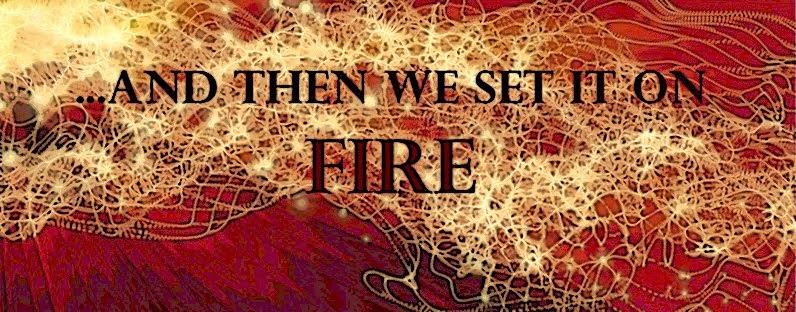The technique for the month of December is making and using plastic fabric. I had tried this quite awhile ago but wanted to experiment a bit more with it. It is easy to make and (hopefully) will get your creative juices going.
The "recipe" for making "fabric" from plastic bags is very simple.
1. Gather your plastic bags. (I like to use the thin ones that grocery stores use, but you can use others.)
2. Cut the bags open down one side and cut the handles and bottom off the bags. You want a fairly smooth surface of bags to work with.
3. Layer 4-6 bags (one on top of the other) between pieces of parchment paper to get a larger piece of "fabric." You can fold one bag to get the number of layers you need to make smaller pieces. (I found that if you mix the type of bags some of them melt faster than others. This may cause a bit more shrinkage and more ripples/bubbles in the "fabric." Personally, I like the texture that gives me.)
You can find Parchment Paper at the grocery store. If you don't have parchment paper, you can also use the paper backing that comes with some fusibles. I think that those non-stick applique sheets would work too.
Here, there are six bags layered one on top of the other.
4. In a well ventilated area, fuse the bags (layered between some type of non-stick material like parchment paper) together by ironing. Start out with a temperature setting of rayon, but keep in mind that you may need to increase the temperature. (I increased the temperature to the highest wool setting.) Keep the iron moving. (Some bags produce more fumes than others. I put my ironing board right next to a window and cracked the window.) It helps to iron the bags from both sides, especially if you are ironing six layers--turn the parchment paper "sandwich" over and iron the back too. Check to see if the bags are fused by lifting up the corner of your parchment paper.
These bags are fused. You can see in the upper left-hand corner where the "fabric" has bubbled a bit. I got a bit impatient and increased the heat of my iron a little too high. I found, though, that I liked the texture this gave the "fabric."
Once the bags have been fused, you can use the bags like regular fabric. (Keep in mind, though, that pinning will create holes in the plastic fabric. You might want to use paper clips to hold the "fabric" instead.) Before using your plastic fabric you will probably want to paint and embellish it. I used acrylic paints and a Sharpie pen to decorate this green fabric.
When you are finished with your "fabric," it can be sewn and stitched. You can use it for purses, iPad/iPod cases, journal covers, etc. You could cut it apart and embellish a quilt with it. There are lots and lots of things you can do with it. I'm anxious to see what creative things you can come up with.
I decided to make a clutch purse out of my green "fabric." I liked the ruffled edge, so I decided to keep it. I am using a magnet (glued with E6000) to close it. I haven't yet decided which decorative closure to use. These are some of my choices--I may not have found the right one yet. Do you like any of these?
Here are some websites that will give you more information.
Tutorial for fused plastic fabric
Video
How to make an iPad case with plastic fabric and general instructions





















































